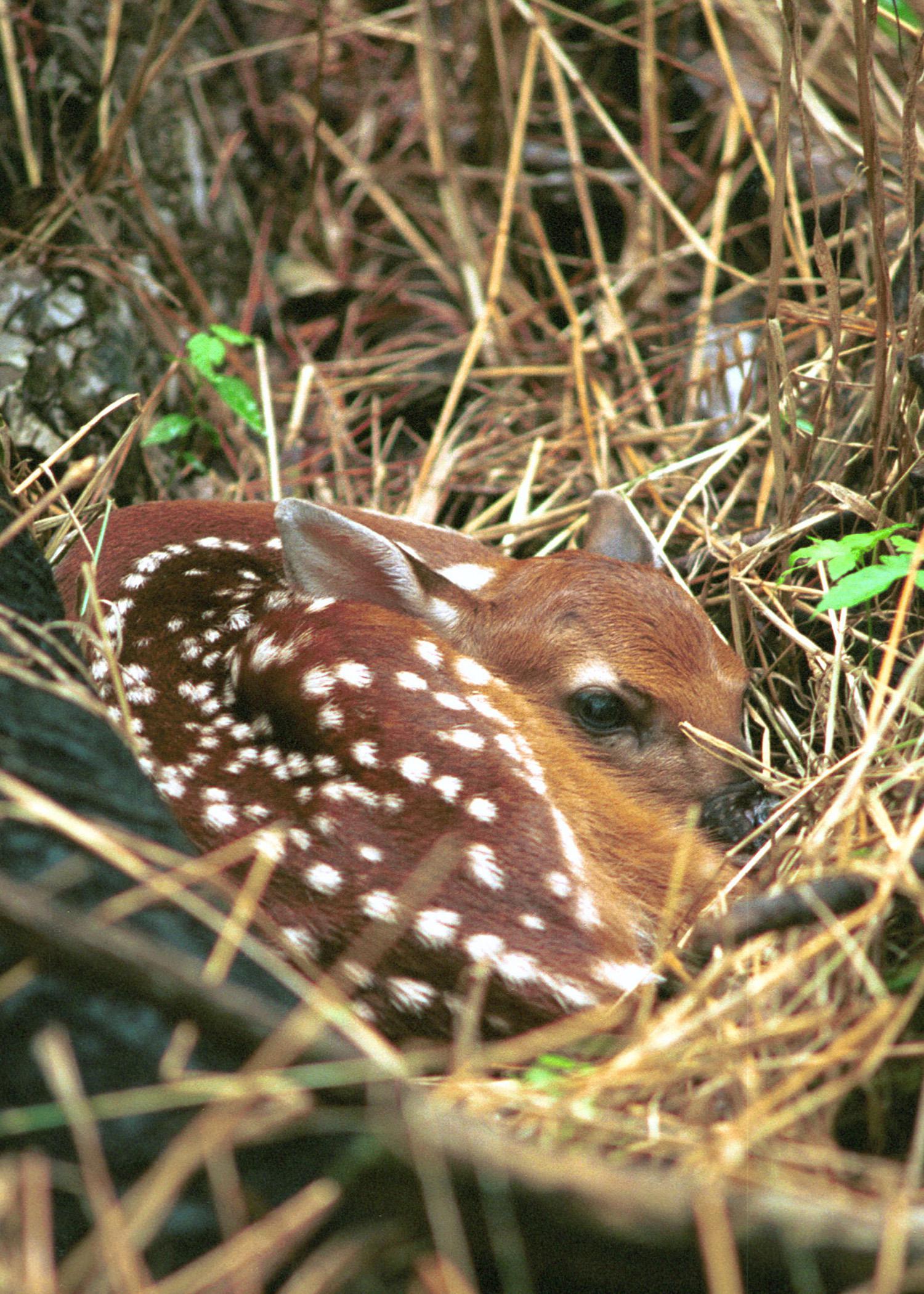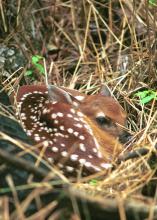Information Possibly Outdated
The information presented on this page was originally released on December 12, 2013. It may not be outdated, but please search our site for more current information. If you plan to quote or reference this information in a publication, please check with the Extension specialist or author before proceeding.
Deer hunters need wild hog awareness
PONTOTOC – Most deer hunters will not encounter wild hogs, but if they do, wildlife biologists want them to be prepared.
At a recent wild hog seminar in Pontotoc, wildlife biologists emphasized the trouble these disease-carrying pests can cause human and wildlife populations. Speakers addressed the environmental impacts, the threats to fawns and ground-nesting birds, hunting decisions and field-dressing precautions.
Bronson Strickland, wildlife specialist with the Mississippi State University Extension Service, said several factors are contributing to the rapid expansion of wild hogs across the nation.
“Wild hog populations are successful and spreading because of their diets, habitats, reproductive ability and low mortality rates,” he said. “They eat anything and lots of it; they can live anywhere; they reproduce early, often and have four to six babies each time; and humans are their only predators. Unfortunately, humans also have helped them expand by transporting them to other areas for hunting.”
For hunters who think this population explosion means an unlimited supply of meat, Strickland warned that some hunters may grow old sitting in a deer stand waiting for a shot at a wild hog. Whether a landowner’s goal is an agricultural product or wildlife conservation, wild hogs will prevent optimum success.
Strickland, a researcher with the MSU Forest and Wildlife Research Center, said wild hogs and natural wildlife compete for resources, and the hogs usually win. Hogs will be a direct threat to young wildlife, including deer, turkey and quail, but their greatest damage comes from the amount of food they consume, depriving wildlife of nourishment by reducing their food supplies, such as acorns.
“Wild hogs eat 3 to 5 percent of their body weight daily, and they just need to be within a day’s walk of water,” he said.
Bill Hamrick, Extension wildlife specialist, said trapping is the most effective method for wild hog control, but deer hunters should be prepared for a chance encounter with a sounder of wild hogs. When a family unit is spotted, hunters should harvest the large sows first.
“Research suggests that without other predators and with plenty of food, one sow and her offspring could become 605 hogs in five years or 122,000 in 10 years,” Hamrick said. “Wild hogs’ reproductive output is four times that of deer.”
Hamrick said to keep the population level, 60 to 70 percent of the wild hogs must be removed annually. For deer, hunters only need to harvest 30 percent to maintain steady numbers.
Jay Cumbee, a U.S. Department of Agriculture wildlife disease biologist, told seminar participants that feral swine carry numerous diseases and parasites with potential implications for wildlife, pets, humans and domestic livestock.
“Because of the prevalence of diseases with wild hogs, hunters should be extra cautious when field dressing the meat. Protective gloves are a must,” Cumbee said. “Cooking meat to the proper temperature is important with all pork products but especially with wild hogs. Use a meat thermometer to make sure the center of the meat reaches 165 to 170 degrees. Never allow domestic animals to eat raw products from wild hogs.”
Hogs can carry infectious diseases that are significant to livestock and other animals, including pseudorabies, swine brucellosis, classical swine fever and foot-and-mouth disease. Diseases transmissible by wild hogs to humans include leptospirosis, brucellosis, trichinosis, E. coli, salmonellosis and toxoplasmosis.
“In addition to wearing latex or nitrile gloves, people should avoid getting body fluids from the carcass into their eyes or mouths,” Cumbee said. “Wash hands thoroughly after field dressing and processing meat. Thoroughly clean and disinfect work areas and tools used to dress and butcher wild hogs.”
Animal remains can be left for scavengers but should not be fed to dogs or pets.
“Depending on your jurisdiction, several methods of appropriate disposal may be considered, such as composting in a landfill or burying on site,” he said. “Check with your local health department or state wildlife agency for recommendations.”
The Extension Service is working with several other agencies, including the USDA’s Wildlife Service and the Mississippi Department of Wildlife, Fisheries and Parks, to educate landowners and hunters about issues related to wild hogs. For more information, contact the local Extension office or go to http://wildpiginfo.msstate.edu/.







